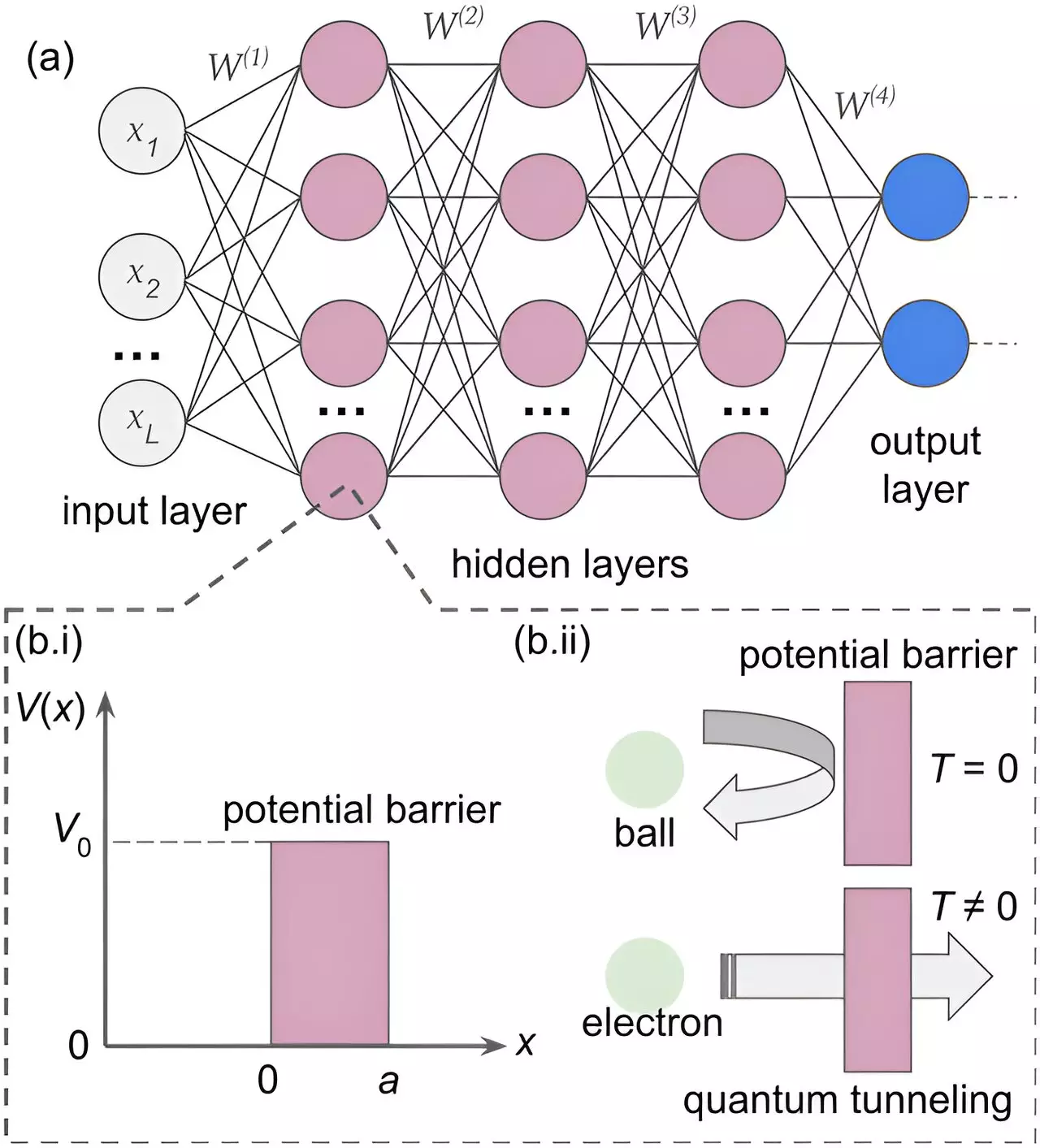The recent research published in APL Machine Learning delves into the fascinating world where quantum mechanics meets artificial intelligence. The groundbreaking study explores how quantum tunneling can be utilized to enhance the capabilities of neural networks in perceiving optical illusions. While optical illusions may seem like simple tricks to the human eye, they pose a significant challenge to computer vision systems. Traditional neural networks have struggled to decipher these visual puzzles, making them an intriguing area of study for researchers looking to improve AI technology.
In the study, the neural network designed by the researcher leverages the phenomenon of quantum tunneling to simulate the way human brains perceive optical illusions. Quantum tunneling allows neurons in the network to overcome barriers and activate even when conventional logic dictates otherwise. By incorporating principles from quantum physics into the neural network’s architecture, the researcher was able to achieve a higher level of accuracy in recognizing optical illusions compared to traditional neural networks.
Quantum tunneling, originally discovered in the early 20th century, has revolutionized our understanding of the natural world. By challenging classical physics and offering new insights into seemingly impossible phenomena, quantum tunneling has opened doors to innovative applications in various fields. In the realm of artificial intelligence, quantum effects can provide a powerful tool to enhance the capabilities of neural networks and improve their performance in complex tasks such as interpreting optical illusions.
The integration of quantum tunneling into neural networks not only advances the field of AI but also raises intriguing questions about human cognition. By mimicking the way human brains process information, the quantum-powered neural network sheds light on the intricate mechanisms underlying human perception and decision-making. The study’s findings suggest that quantum effects may play a crucial role in modeling human thinking, offering a new perspective on the intersection of quantum physics and cognitive science.
As we navigate an era dominated by deepfakes and misinformation, understanding how our brains process illusions and construct reality becomes increasingly vital. The research on quantum-powered neural networks opens up exciting possibilities for unraveling the complexities of human behavior and cognitive processes. By exploring how quantum effects can enhance social behavior modeling and opinion radicalization in social networks, researchers aim to harness the potential of quantum-powered AI to shape the future of intelligent technology.
The fusion of quantum physics, neural networks, and optical illusions represents a promising frontier in the field of artificial intelligence. By embracing the principles of quantum mechanics in designing neural networks, researchers are pushing the boundaries of what AI can achieve. As we delve deeper into the mysteries of quantum tunneling and its applications in AI, we may unlock new paths towards developing conscious robots and more human-like artificial intelligence systems. The journey towards understanding the intricate connection between quantum physics, neural networks, and human cognition continues, propelling us into a future where the realms of science fiction may soon become reality.


Leave a Reply